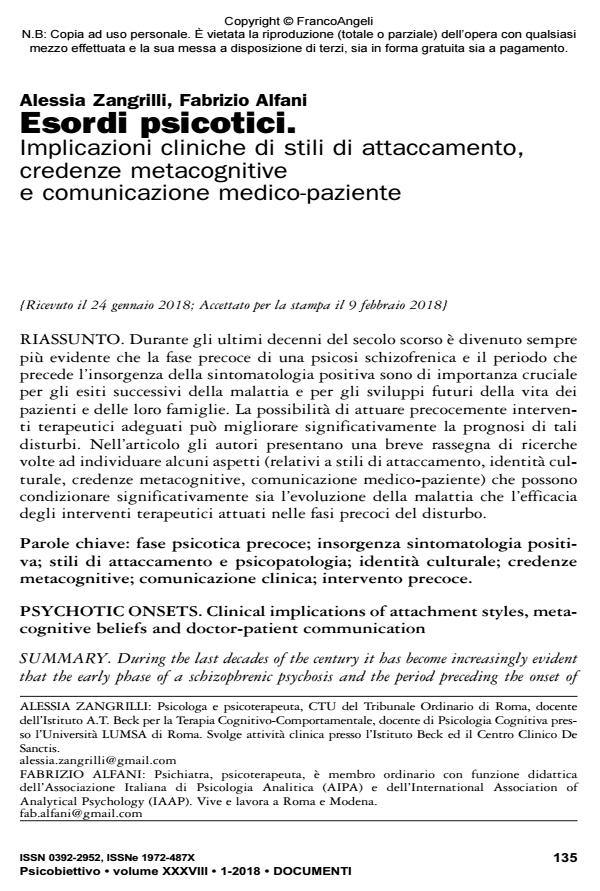Esordi psicotici. Implicazioni cliniche di stili di attaccamento, credenze metacognitive e comunicazione medico-paziente
Titolo Rivista PSICOBIETTIVO
Autori/Curatori Alessia Zangrilli, Fabrizio Alfani
Anno di pubblicazione 2018 Fascicolo 2018/1
Lingua Italiano Numero pagine 11 P. 135-145 Dimensione file 121 KB
DOI 10.3280/PSOB2018-001010
Il DOI è il codice a barre della proprietà intellettuale: per saperne di più
clicca qui
Qui sotto puoi vedere in anteprima la prima pagina di questo articolo.
Se questo articolo ti interessa, lo puoi acquistare (e scaricare in formato pdf) seguendo le facili indicazioni per acquistare il download credit. Acquista Download Credits per scaricare questo Articolo in formato PDF

FrancoAngeli è membro della Publishers International Linking Association, Inc (PILA)associazione indipendente e non profit per facilitare (attraverso i servizi tecnologici implementati da CrossRef.org) l’accesso degli studiosi ai contenuti digitali nelle pubblicazioni professionali e scientifiche
Durante gli ultimi decenni del secolo scorso è divenuto sempre più evidente che la fase precoce di una psicosi schizofrenica e il periodo che precede l’insorgenza della sintomatologia positiva sono di importanza cruciale per gli esiti successivi della malattia e per gli sviluppi futuri della vita dei pazienti e delle loro famiglie. La possibilità di attuare precocemente interventi terapeutici adeguati può migliorare significativamente la prognosi di tali disturbi. Nell’articolo gli autori presentano una breve rassegna di ricerche volte ad individuare alcuni aspetti (relativi a stili di attaccamento, identità culturale, credenze metacognitive, comunicazione medico-paziente) che possono condizionare significativamente sia l’evoluzione della malattia che l’efficacia degli interventi terapeutici attuati nelle fasi precoci del disturbo.
Parole chiave:Fase psicotica precoce; insorgenza sintomatologia positiva; stili di attaccamento e psicopatologia; identità culturale; credenze metacognitive; comunicazione clinica; intervento precoce.
Alessia Zangrilli, Fabrizio Alfani, Esordi psicotici. Implicazioni cliniche di stili di attaccamento, credenze metacognitive e comunicazione medico-paziente in "PSICOBIETTIVO" 1/2018, pp 135-145, DOI: 10.3280/PSOB2018-001010